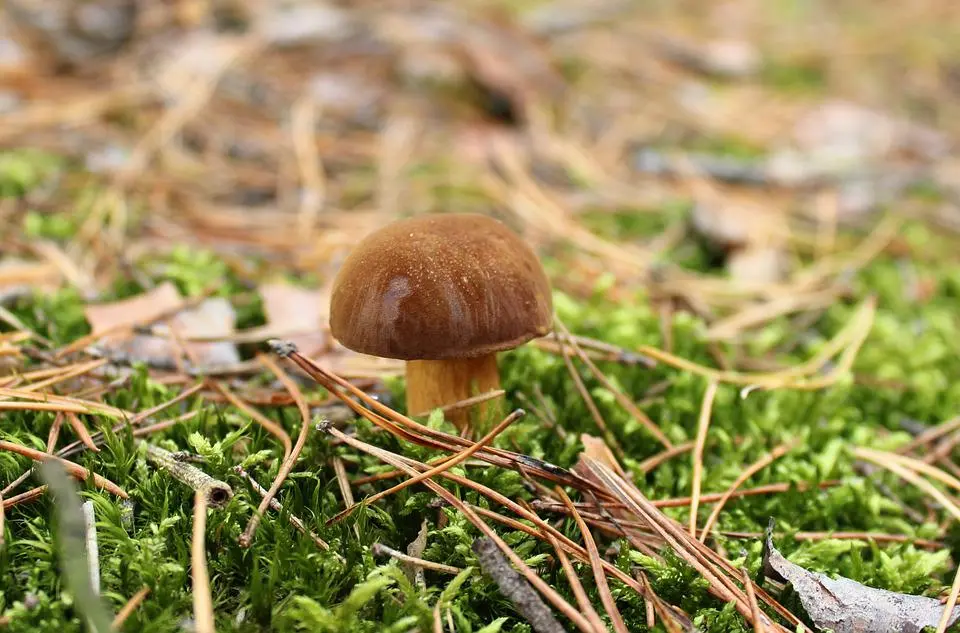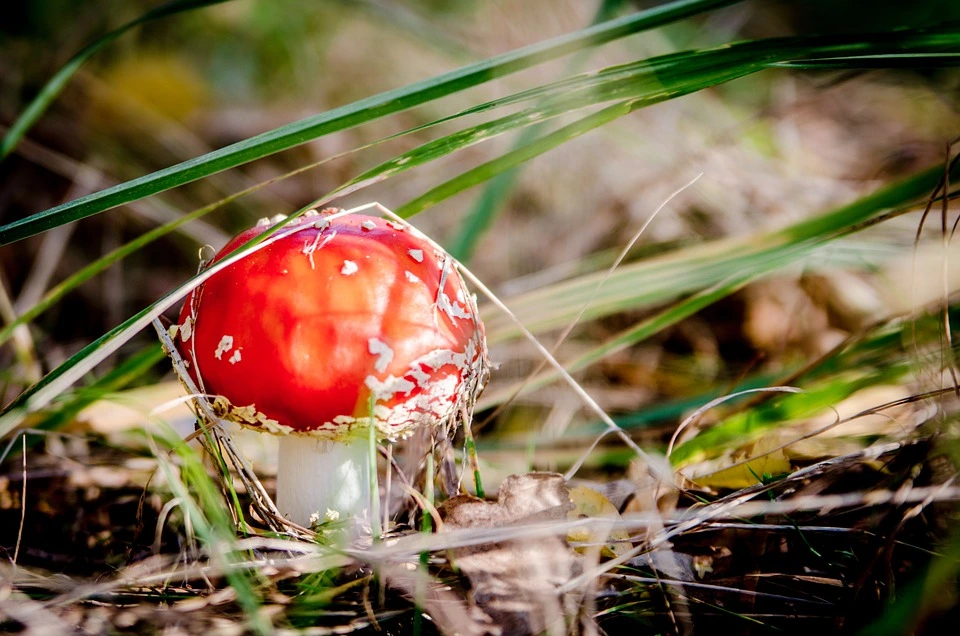Guida al Foraggiamento dei Funghi - Scopri Come Raccogliere i Funghi
La ricerca dei funghi è un'attività molto diffusa. Non c'è da stupirsi: sono un ingrediente magico di molti piatti deliziosi. Tuttavia, la caccia ai funghi risveglia alcune controversie. Molti si chiedono come raccogliere correttamente i funghi e, soprattutto, quando farlo. Scoprite cosa c'è da sapere al riguardo. Grazie ai nostri consigli per la ricerca dei funghi, la loro raccolta non sarà più un problema per voi.

La raccolta dei funghi è legale?
La raccolta di funghi è più popolare in alcuni Paesi rispetto ad altri. La Polonia è un esempio perfetto, dove non ci sono praticamente limitazioni. Le spugnole sono l’unica eccezione, in quanto sono specie protette.
Per quanto riguarda gli altri Paesi, esistono alcune restrizioni o divieti.
- In Germania, la quantità massima di funghi da raccogliere è di solo 1 kg per persona alla volta.
- In Gran Bretagna se ne possono raccogliere un po’ di più, cioè 1,5 kg al massimo per persona.
- In Italia, chi vuole andare a caccia di funghi deve prima ottenere una licenza speciale.
- La Francia richiede una tassa speciale per la raccolta dei funghi.
Le leggi sulla raccolta dei funghi sono molto diverse in Belgio e nei Paesi Bassi: la raccolta dei funghi è assolutamente legale. Ma portarli fuori dalla foresta è considerato un furto.
E negli altri continenti, ad esempio negli Stati Uniti? La questione potrebbe essere più complicata, poiché molte foreste sono private. Inoltre, ogni luogo è regolato dalla legge statale. Ma ci sono molti luoghi di raccolta dei funghi completamente legali - i cercatori di funghi locali li conoscono. Potete cercare informazioni sui luoghi di raccolta dei funghi su vari forum online.

Quando è la stagione della raccolta dei funghi?
La raccolta dei funghi non è possibile tutto l’anno. Molto dipende dalle condizioni di una determinata zona. Bisogna ricordare che i funghi commestibili vivono in simbiosi con il loro habitat naturale. Ciò significa che, osservando l’ambiente circostante, si può dedurre quali specie di funghi si possono incontrare in quella determinata zona.
- I luoghi in cui crescono i larici sono di solito pieni di fanti viscidi.
- Le betulle sono circondate soprattutto da funghi Leccinum.
- Le pinete sono famose per i cappucci di zafferano e i funghi tricoloma.
- I Penny Buns crescono nelle foreste di querce e faggi.
Molte persone decidono di raccogliere anche i funghi del miele. Possono crescere praticamente in qualsiasi foresta.
Ma quando è il periodo migliore per la ricerca dei funghi? In genere, la stagione della raccolta dei funghi va da giugno a ottobre: è il periodo in cui se ne trovano di più, con piccole pause tra luglio e agosto. Alcuni funghi crescono anche a basse temperature e possono essere raccolti dopo le prime gelate. Questo vale soprattutto per i funghi del miele.
Come sottolineato dai cercatori di funghi, i funghi commestibili crescono meglio di notte. Quindi, se volete andare a cercare funghi, programmate la vostra caccia per la mattina presto. In quel momento avrete le maggiori possibilità di trovare esemplari che non sono stati mangiati dai parassiti della foresta. Inoltre, sarete più lontani dagli altri raccoglitori di funghi.

Foraggiamento di funghi: come prepararsi per la caccia ai funghi?
Un’ottima preparazione è l’elemento essenziale per una caccia ai funghi di successo. È obbligatorio un abbigliamento adeguato. Optate per abiti impermeabili o, se non è possibile, per una tuta da ginnastica comoda e una giacca impermeabile. Potrebbero essere utili anche scarponi robusti con suole spesse: i modelli da trekking sono la scelta migliore.
Se il vostro abbigliamento è già buono per la raccolta dei funghi, non dimenticate gli strumenti e gli accessori per la ricerca dei funghi che sicuramente utilizzerete:
- un contenitore per i funghi - può essere un cestino, un secchio o una borsa a rete,
- un coltello da funghi (o un coltello tascabile),
- un repellente per zanzare e zecche,
- una bussola,
- una mappa - se non conoscete bene la zona,
- qualcosa da bere,
- uno spuntino - se avete in programma un’escursione di un giorno.

Come raccogliere i funghi? Diventa un vero cacciatore di funghi!
Molti cacciatori di funghi discutono su come raccogliere i funghi: se i bellissimi esemplari debbano essere tirati o tagliati. Le opinioni sono molto discordanti. La maggior parte delle persone sostiene che tirare un fungo (torcendo il gambo) e coprire il foro rimanente è il metodo migliore, in modo che il micelio sia protetto e possa produrre più frutti in futuro.
Ma anche tagliare un fungo sopra il terreno, come fanno molte persone, non è sbagliato. La regola più importante è evitare di spennare violentemente i funghi e di distruggere il loro luogo di crescita.

Consigli per la raccolta dei funghi: si possono raccogliere tutti i funghi?
Sebbene i funghi commestibili abbiano un sapore delizioso e molti estimatori, bisogna fare molta attenzione quando si raccolgono. Assicuratevi di portare a casa solo gli esemplari di cui siete sicuri al 100%.
Quali specie evitare?
- Cappello della morte (Amanita phalloides)** - è mortalmente velenoso e assomiglia a un fungo bianco a bottone.
- Amanita moscia (Amanita muscaria)** e Amanita pantera (Amanita pantherina)** - molto caratteristiche con macchie sul cappello.
- Sulphur Tuft (Hypholoma fasciculare)** - i cacciatori di funghi inesperti potrebbero confonderlo con il fungo del miele. Ma sviluppa un odore molto sgradevole, che dovrebbe attirare l’attenzione di chi lo raccoglie.
- Deadly Dapperling (Lepiota brunneoincarnata) - alcuni potrebbero confonderlo con il Fungo parasole, anche se si tratta di una specie rara.
- Cappuccetto morto (Galerina marginata) - cresce soprattutto sui tronchi delle conifere. Molto pericoloso e comune nella maggior parte delle foreste.
- Fungo a macchia gialla (Agaricus xanthodermus) - questa specie è presente non solo nei boschi, ma anche nelle aree verdi urbane. È simile ai classici funghi a bottone bianco, ma rilascia un odore molto sgradevole quando viene cucinato.
- Fibro di morte (Inocybe erubescens) - è uno dei funghi più pericolosi, in grado di sconfiggere l’organismo umano in pochissimo tempo.
- Boleto di Satana (Boletus satanas) - è difficile confonderlo con qualsiasi altro fungo per il suo caratteristico gambo rosso e il cappello bianco.
- Russula vomitante (Russula emetica) - ha un cappello di colore rosso intenso.
Non siete sicuri dei funghi che avete incontrato e vi chiedete se sono commestibili? Meglio lasciarli stare.


📍 Cosa indossare per andare a caccia di funghi?
Quando scegliete l'abbigliamento per la ricerca di funghi, scegliete capi impermeabili o che non vi dispiaccia bagnare o sporcare. Sono indispensabili scarponi robusti, ad esempio per il trekking. Non dimenticate una giacca impermeabile e un cappello.
📍 Funghi da foraggio: dove trovare i funghi nella mia zona?
I funghi crescono di solito nei boschi, nei parchi e nelle aree verdi. Prediligono luoghi ombreggiati e umidi. Si trovano intorno ad alberi come querce, faggi, abeti e pini.
📍 Quando è la stagione della raccolta dei funghi?
I primi funghi possono essere raccolti già a maggio, ma in genere si tratta di pochi esemplari singoli. A seconda del Paese, la stagione dei funghi vera e propria dura tra giugno e ottobre. A volte si possono trovare funghi del miele nei boschi anche dopo le prime gelate.
📍 Cosa portare con sé per la ricerca di funghi?
Un abbigliamento adeguato è un elemento essenziale da portare con sé per la ricerca di funghi. Inoltre, un cestino per i funghi, un coltello, una bussola con una mappa, un telefono per contattare qualcuno in caso di smarrimento sono tutti elementi utili. Se prevedete di andare a cercare funghi per diverse ore, assicuratevi di portare con voi qualcosa da bere e da mangiare.
Articoli in primo piano




